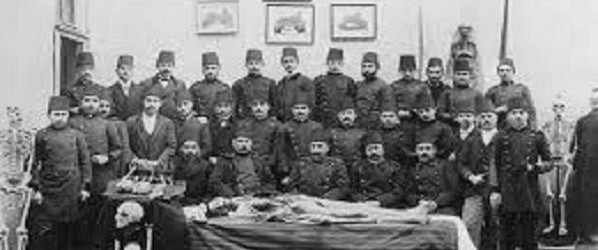During sixteenth century, the Ottoman Empire had been at least same to any of the European states in militarily, technologically, economically and in administrative efficiency. However, she had fallen behind all major European states by the last quarter of 18th century. It was entitled as a former great power in gradual eclipse, whose future became a problem for its own rulers as well as leading European states, rather than a minor state. The image of Turks from Europe is important while analyzing the balance of power policy that Ottoman Empire used to survive a century more.
Ottoman’s exploit of balance of power started with Napoleonic Wars, as a perfect example of balance of power, both European states and Ottoman Empire shift alliances, signed secret agreements and went over minor wars to avoid a bigger one.
Ottoman Empire had to resort diplomatic maneuvering rather than military resistance in order to survive from threats of major powers, because of its lack of logistical backup and modern transport, financial weakness at the states and the certain number and strength of its potential enemies.
Careful diplomacy was the key issue in Ottoman survival; exploiting line of balance of power between the major European states (Britain, France, Austria, and Russia) was well established as a strategy while knowing that destruction of Ottoman Empire could lead to a major war within the rivals.
In 1793-96, permanent embassies were established in London, Berlin, Paris and Vienna. Personnel of the embassies were representing the government on the other hand they have another major role, observing lifestyle, politics and cultural movement in states they were commissioned.
Originally there was no Ministry of Foreign Affairs but Chief of the Scribes, as assistant to Grand Vizier. However in 1835, a new Ministry of Foreign Affairs (Umur-ı Hariciye Nezareti) was established and relations with religious millets were held in the Ministry as well until 1880s. Sultan also could take over the foreign policy as in the case of Abdülhamid II. Overall, the Empire seemed to have built an efficient foreign policy structure, not very different than other autocratic European states of its age.
From the beginning of 19th century Ottoman Empire could not a single war, and started to exploit balance of power in Europe to gain breathing space while modernizing its military, economy, political and administrative structure, but could not find enough breathing moment. Than diplomacy became the chronic key in survival in when Ottoman’s face three conflict zones. First conflict zone is Balkan’s, while Ottoman Empire was facing serious and compelling riots, Austrian and Russian were fighting control over the Balkan territory. Furthermore, Russia aims to access Mediterranean Sea passing from the Turkish Straits also made Brits concerned over its trade routes. On top of that, French and British ambitions on Arab Middle East were also ready to exploit. The Sublime Porte was thinking about canceling one another out in these conflict zones. In this sense two major policies towards European powers were produced. These were both to avoid conflicts and form alliances with any of them, relying on balance of power.
Until the World War I, Ottoman Empire did not form alliances with any major power; just received supports in sake of survival, the most important examples were in Greek revolt, in Mohammed Ali issue and in conflicts with Russian Empire. During World War I, in a sense forming alliances with Central Powers brought the end of a six hundred years old empire.
Basri Alp AKINCI
























































